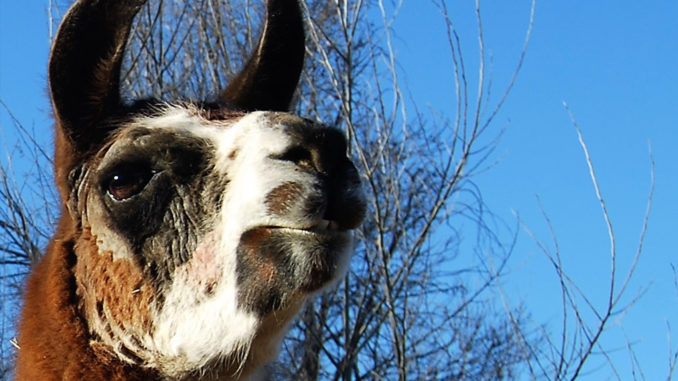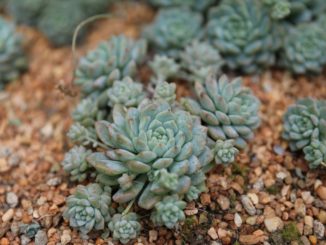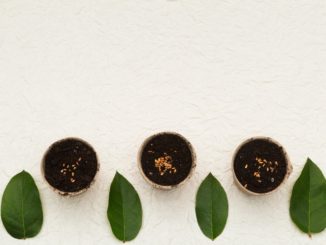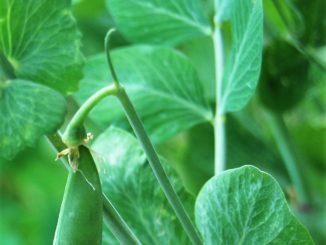
Sustainable Livestock Solutions for Northern Colorado
Kathleen Miller
Gaia’s Farm and Gardens
Llamas are the perfect sustainable livestock choice for any farm or ranch because they are quiet, gentle and affectionate and they don’t take a lot of work. The Aymaran Indians who live near Lake Titicaca in Peru and Bolivia call the llama a “speechless brother” because only a brother would carry the burdens they do without complaint. Llamas are a hardy, durable, low maintenance animal.
Llamas are native to Central and South America, where they have been bred for thousands of years by the indigenous people. Over 6300 years of selective breeding for gentleness have made Llamas the safest and easiest-to-train pack animals in the world.
When you look at a llama you can see its soul as it gazes back sympathetically with those huge eyes, ears perked up, like it understands you and really cares about your problems. These irresistible qualities may explain their popularity as pets and as livestock guards on farms and ranches. A few decades ago, they were almost unheard of in this country.
Today there are about 200,000 in the United States, according to the International Llama Registry, which keeps genealogical records. A Llama is your friend and will steal your heart. They also make very attractive walking lawn ornaments and lawn mowers, recycling your grass clippings into nutrient-rich ready to use fertilizer for your garden. Llamas are picky eaters and prefer hay, grass, minerals, and grain and they cost about the same to feed as a big dog. Llamas are strictly outdoor animals, and males must be kept separate from females, otherwise, they will mate nonstop.
You can also have male llamas castrated to make a more suitable guard for your livestock. They are very protective of their owners and of the flock of animals that they are assigned to guard such as sheep or goats. Even though llamas are standoffish at first, they are intelligent and curious and need to get to know you. And those stories about spitting, most llama owners will tell you, are exaggerated: llamas will spit at other llamas to establish social hierarchies, but unless they feel threatened, they rarely spit at people.
They’re just so calming and enjoyable to be around; you can tell them all your secrets and your problems. They know all your likes and dislikes when I’m mad or I’m happy, they simply go with the flow and just listen and don’t tell anyone. That capacity, some believe, stems from an innate intuition. Llamas have an amazing sixth sense. They are very good with people with special needs, so it should come as no surprise that some llamas dispense that comfort professionally.
Ambassador llamas visit schools, churches, and libraries; therapy llamas spend time with the sick, elderly and disabled. At some llama shows, there is a category called public relations, in which a llama’s ability to offer solace is evaluated through tasks like lowering its head to greet someone in a wheelchair.

My Levi used to do this when I was taking care of my mother at the farm when she had two brain tumors. He would walk in her place and kiss her on the top of her head when she was in her wheelchair. He just knew this is someone who needs me. All llamas hum; in particular, mothers hum to their babies, which hum back. It’s a curious behavior, but one that most people find soothing.
Until recently, llamas were hard to come by here. For most of the 20th century, it was illegal to import them because of foot-and-mouth disease; the largest herds were at William Randolph Hearst’s estate in San Simeon, Calif., and the Catskill Game Farm in New York. Most people associate llamas with Peru, where they haul packs up the Andes and guard flocks of sheep.
In the United States, some llamas do similar kinds of work. As pets llamas are often treated like members of the family: petted, shampooed and groomed, shuttled to llama shows and trotted out to schools, hospitals, and nursing homes, where they spread their special brand of Zen. Owners must check them carefully to see if they are hurt or sick because llamas are so stoic they seldom complain. If they don’t have health problems, they can live for decades. Today, llamas are enjoyed by many people in this country and used as show animals, fiber producers, pack animals, hiking companions, therapy animals and pets.
Sustainable living, gardening, and farming is based on an understanding of ecosystems, the study of relationships between organisms and their environment. It has been defined as an integrated system of plant and animal production practices that will last over time. Having a harmonious relationship with Gaia (Mother Earth) provides food for people enhances the natural environment upon which the community depends, makes efficient use of resources and integrates natural cycles that sustain economic viability as well as enhances the quality of life for the community as a whole.
Support Northern Colorado Journalism
Show your support for North Forty News by helping us produce more content. It's a kind and simple gesture that will help us continue to bring more content to you.
BONUS - Donors get a link in their receipt to sign up for our once-per-week instant text messaging alert. Get your e-copy of North Forty News the moment it is released!
Click to Donate



